Lectures are not just about chalk and blackboards.
On a Monday morning, the class of young teacher Hoang Thi Loan, Binh Minh High School, Hanoi, became unusually bustling. The Literature lesson did not begin with traditional notes, but with a colorful video recreating the vast, open natural space in the short story “Salt of the Forest”, a work by writer Nguyen Huy Thiep. On the screen, the image of the deep green old forest and the lively movement of animals as if stepping out of the book made the whole class watch attentively. “I want students to feel the beauty of nature, and from there, love the environment, trees, and all the species around their lives more,” Ms. Loan shared with a smile.
Not just limited to illustrations, Ms. Loan's lessons are a series of multi-sensory experiences. She and her colleagues have boldly innovated methods, combining dramatization, teaching by stations and especially applying AI in lesson design. Thanks to that, each lesson becomes a journey of discovery , where students are no longer passive recipients but directly create and express their thoughts and feelings.
In the discussion of the work “Salt of the Forest”, Ms. Loan let students play the role of Mr. Dieu - the main character of the story to express their feelings and thoughts about nature and human hunting. Some students were moved, some were worried, and some were bold in their responses to how to treat the forest. The class became lively and warm like a conversation between people who love literature and love life.

When the class entered the final part, Ms. Loan organized for students to draw posters to promote environmental protection. But the special thing was that those paintings were no longer "static" as usual. Using AI technology, Ms. Loan supported students, making the drawings of forests, monkeys, or green treetops move, creating short, lively and meaningful videos. Each drawing, each frame contained the message of protecting nature that the students wanted to convey.
“AI does not replace human emotions, but it helps lessons become more engaging, intuitive and closer,” Ms. Loan shared. For her, technology is just a tool, while the teacher’s heart is what “breathes life” into each lesson. It is this harmonious combination that has made Literature classes at her school colorful, conveying knowledge and bringing genuine emotions, making students see that studying literature is learning to love life more.
The teacher becomes a creative guide
Technology is forcing teachers to change their roles. From “instructors,” they are becoming designers and guides of learning journeys. Many teachers are taking the initiative to learn digital skills, experiment with new software, and co-create learning content with their students.
That is the story of teacher Dam Thi Uyen, Trung Khanh Secondary School, Cao Bang province, who brought the STEM and Robotics education model to students in the border area. It is known that the school she is teaching is located in a remote border area, lacking in all aspects, students have not had much access to STEM, Robotics, AI.
At first, the place where she taught lacked laboratories, had weak internet, and limited teaching equipment. Ms. Uyen had to learn programming, tinker with mechanics, and connect with organizations like OHStem and STEAM for Vietnam to bring STEM and Robotics education models to students in border areas. She and her students worked hard to create mini water purifiers, gas leak warning systems, and automatic waste sorting models. In the small room of the school, the late night lights were still on, and her and her students' hands were still meticulously assembling, testing, and then starting over after each failure.
From schools in the border areas, the students reached out to the national playground, won second prize in the provincial Science and Technology Competition, first and second prizes in the district-level Youth Creativity Competition, the 2025 Robotics Inspiration Award, and especially surpassed many strong teams to participate in the VEX Robotics national finals.

Or that is the sharing of teacher Nguyen Thu Huyen, a Literature teacher at Minh Khai Secondary School, Hai Ba Trung, Hanoi, who said that currently, schools and educational institutions have created conditions for teachers to learn and study about technology, especially artificial intelligence (AI) very early. "Since 2024, I have started learning about how to apply AI technology to preparing lesson plans and lectures," said Ms. Huyen.
According to Ms. Huyen, digital technology has become a powerful assistant to help teachers' lectures become more vivid, attractive, and colorful. For example, when purchasing AI packages, Chat GPT, teachers can optimize the time to prepare lesson plans, come up with ideas for their classroom lectures with just simple commands. In particular, in AI there are other software such as Canva, a tool to convert word documents into presentation slides. Ms. Huyen gave an example when teaching the work "Chi Pheo" by Nam Cao. Instead of teaching in the traditional way, she used AI to create a video of the character "Chi Pheo" recounting his life, with voice, expression, and context simulated realistically. "When Chi Pheo "appeared" right on the screen, students felt like they were meeting a real character, they watched attentively and no longer had to take dry notes like before," Ms. Huyen said.
In particular, from interesting lectures, students gradually become creative people, they not only learn to know but also learn to do, creating values for the community. Ms. Huyen shared a lesson where students experienced doing a learning project related to the theme of Hundreds of Colors of the Regions, the book series Connection. From colorful videos, films, and slides about costumes and life of 54 ethnic groups in Vietnam, students came up with ideas to draw pictures, give presentations, and dramatize stories revolving around the beauty of the country and homeland of Vietnam.
However, Ms. Huyen also emphasized that one of the greatest values that technology brings is the ability to inspire. When images, sounds and interactions are harmoniously combined, the lesson becomes a vivid story. But to "breathe life" into the lecture, technology is only a catalyst, the soul of the lesson is still the teacher's emotions. "AI can help me create videos, prepare lesson plans, but it cannot teach me how to look at students with loving eyes or how to arouse compassion in them," Ms. Huyen said.
From the above stories, it can be said that a lesson can apply a series of technical effects, but if it lacks connection and emotion, it is still a "cold" lesson. On the contrary, just a moment when teachers and students share and are moved together can make the lesson truly lively, authentic and close. In fact, when technology "breathes life" into the lesson, what changes is not only the form of teaching, but also the way knowledge is perceived and spread. Lively classrooms, interactive lessons, and creative products made by students are showing the new vitality of Vietnamese education in the AI era. However, the most important thing that technology brings is not modernity, but the opportunity for teachers to "breathe life" into the lessons, inspiring students with new creative ideas.
Source: https://baophapluat.vn/khi-cong-nghe-thoi-hon-vao-bai-giang-01257446.html




![[Photo] Prime Minister Pham Minh Chinh meets with representatives of outstanding teachers](https://vphoto.vietnam.vn/thumb/1200x675/vietnam/resource/IMAGE/2025/11/15/1763215934276_dsc-0578-jpg.webp)







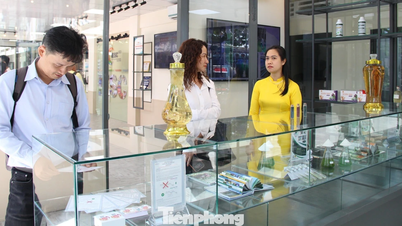

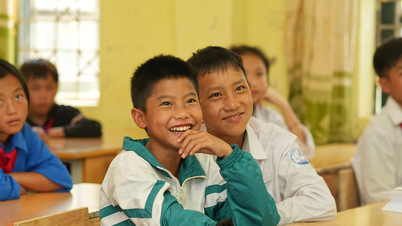




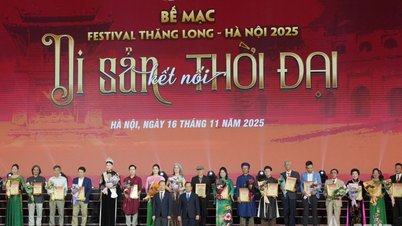













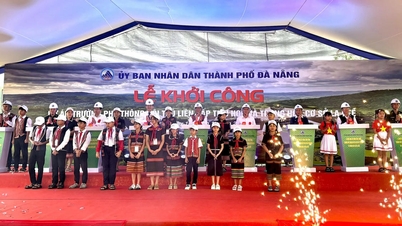

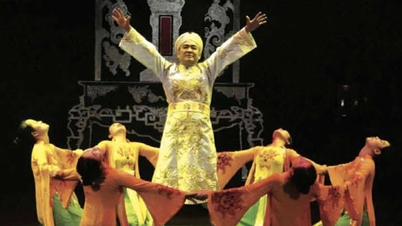
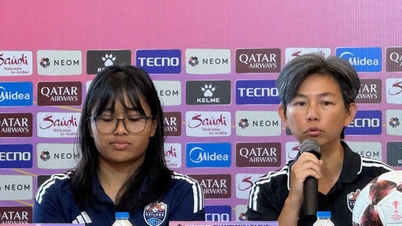
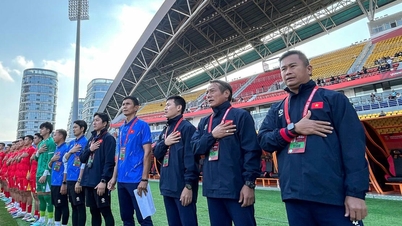










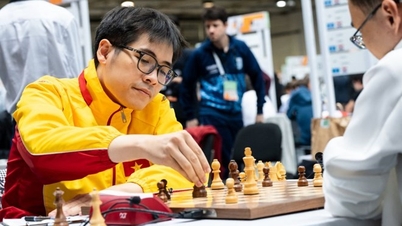

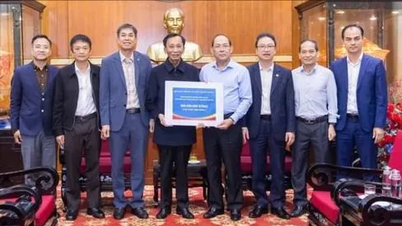






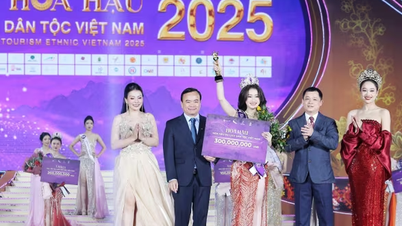

















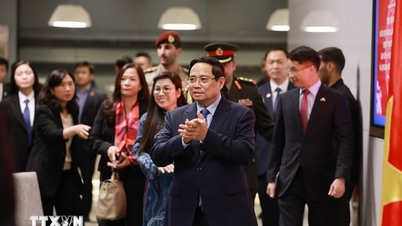













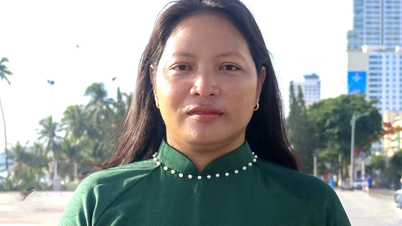



















Comment (0)